#saginaw basin
Explore tagged Tumblr posts
Text
The Role of Non-Profit Organizations in Saginaw, Michigan's Community Development.
Non-profit organizations play a crucial role in Saginaw, Michigan's community development, addressing a wide range of social, economic, and environmental issues. These organizations work collaboratively with local governments, businesses, and residents to improve the quality of life in the area. Here are some key roles and examples of non-profits contributing to Saginaw, Michigan community development:
1. **Social Services and Support**-
**United Way of Saginaw County:** This organization funds and supports various programs addressing health, education, and financial stability. They offer services such as emergency assistance, literacy programs, and youth mentoring.-
**First Ward Community Center:** Provides social, educational, and recreational services to residents, including after-school programs, senior services, and community events.
2. **Economic Development**-
**Saginaw Future Inc.:** A non-profit economic development organization that works to attract new businesses, support existing businesses, and create job opportunities. They provide resources for business financing, site selection, and workforce development.-
**Neighborhood Renewal Services of Saginaw:** Focuses on revitalizing neighborhoods through housing rehabilitation, home ownership programs, and community beautification projects.
3. **Education and Youth Development**-
**READ Association of Saginaw County:** Promotes literacy by providing reading programs and volunteer tutors to help children improve their reading skills.-
**Boys & Girls Clubs of the Great Lakes Bay Region:** Offers after-school programs, summer camps, and leadership training to help youth develop the skills they need to succeed in school and life.
4. **Health and Wellness**- **Covenant HealthCare Foundation:** Supports the local healthcare system by funding medical equipment, patient care programs, and community health initiatives.-
**Great Lakes Bay Health Centers:** Provides comprehensive healthcare services, including medical, dental, and behavioral health care, regardless of the patient's ability to pay.
5. **Environmental Conservation**-
**Saginaw Basin Land Conservancy:** Works to protect and restore natural areas in the Saginaw Bay Watershed. They engage the community through conservation projects, educational programs, and volunteer opportunities.-
**Friends of the Shiawassee River:** Focuses on the conservation and restoration of the Shiawassee River, promoting clean water and healthy habitats through community clean-ups, educational events, and advocacy.
6. **Arts and Culture**-
**Saginaw Art Museum:** Provides art exhibitions, educational programs, and community events that enrich the cultural life of Saginaw.-
**Temple Theatre Foundation:** Preserves and promotes the historic Temple Theatre, hosting a variety of cultural and entertainment events that contribute to the vibrancy of the community.
7. **Community Building and Advocacy**-
**Saginaw Community Foundation:** A philanthropic organization that provides grants to local non-profits, supports community projects, and fosters collaboration among various stakeholders to address community needs.-
**East Side Soup Kitchen:** Offers meals and support services to individuals and families in need, fostering a sense of community and providing a safety net for vulnerable populations.
8. **Housing and Homelessness**-
**Habitat for Humanity Saginaw-Shiawassee:** Builds and renovates affordable housing for low-income families, helping them achieve home ownership and stability.
**Restoration Community Outreach:** Provides shelter, support services, and case management to homeless individuals and families, helping them transition to permanent housing.
These non-profit organizations, among others, are instrumental in driving positive change in Saginaw. They address immediate needs, promote long-term development, and create a more resilient and vibrant community through their dedicated efforts and programs.
0 notes
Link
Products with this design are available from Redbubble
#redbubble#findyourthing#wetland#discovery preserve#euclid linear park#bay city#michigan#saginaw basin#land conservancy#sblc
0 notes
Text
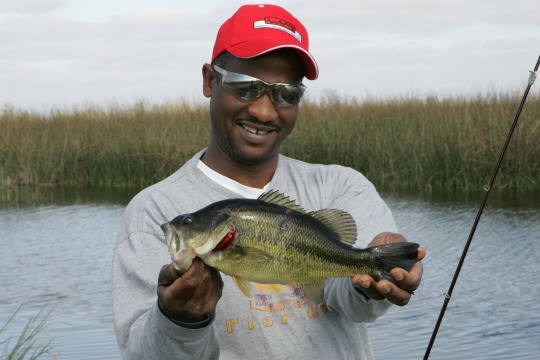
"Fisherman proudly shows off his catch." Cameron Prairie National Wildlife Refuge, LA, Records of the U.S. Fish and Wildlife Service, NARA ID 166709492.
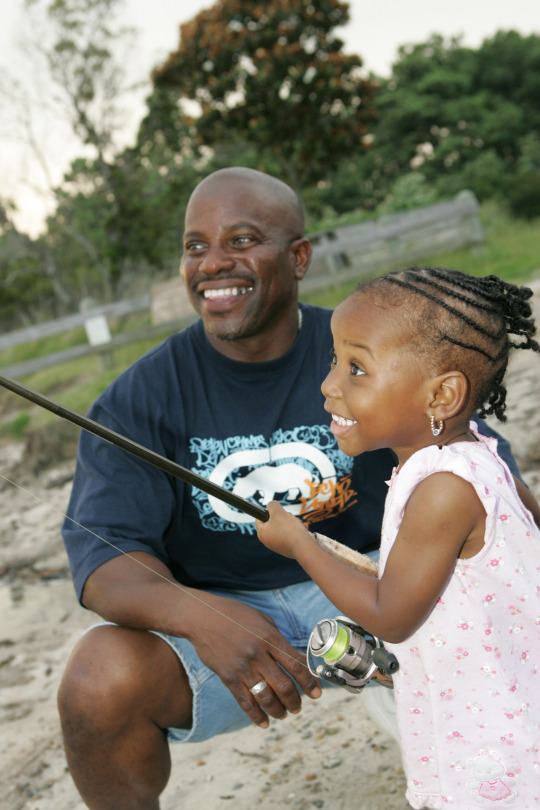
"Learning to fish," Alligator River National Wildlife Refuge, NC, undated. U.S. Fish and Wildlife Service, NARA ID 166710712
Calling all Anglers: FISHING SEASON! By Miriam Kleiman, Public Affairs. Special shoutout to the team @Fletcher's Cove! Is there a connection between Archives and fishing? YES! We hold millions of records from the U.S. Fish and Wildlife Service (USFWS, Record Group 22), dating back to 1868! Selected highlights below. Stay tuned: learn about the agency's brilliant promotion of.... CARP! See the historic 1911 EAT THE CARP! poster imploring Americans to embrace, fish, eat, can, jelly and enjoy this then-new (to the US) fish!
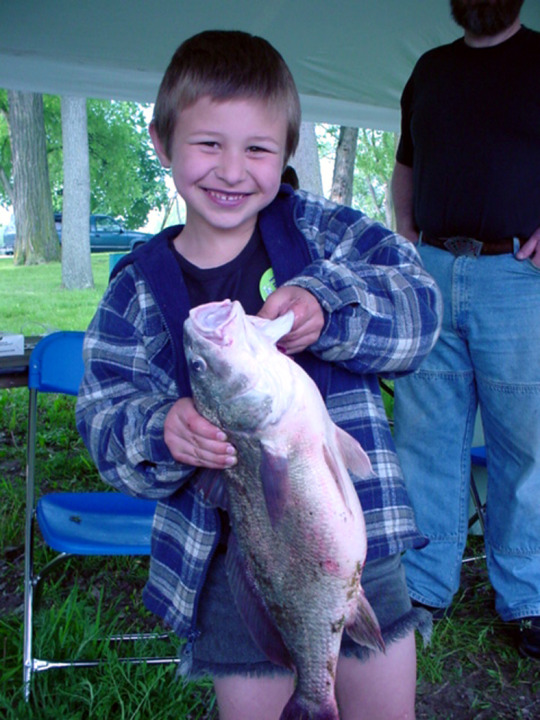
Kids' fishing day; Shiawassee National Wildlife Refuge, 6/8/2002, Saginaw, MI. U.S. Fish and Wildlife Service, NARA ID 166691838..
Cool off from the heatwave with ice fishing!
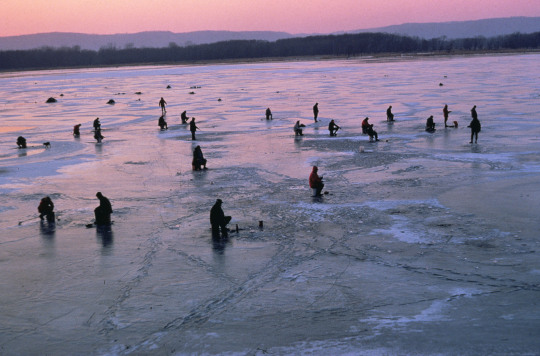
Ice Fishing, Stoddard, WI, undated, NARA ID 166692836.
Flashback: Halibut Fishing 1888!
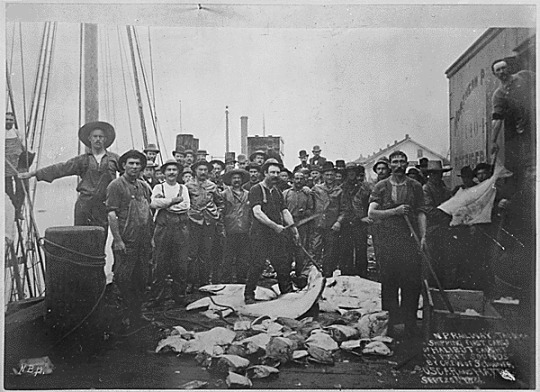
"N. P. Railway, Tacoma [Wash. Terr.] Shipping first cargo of halibut caught in Puget Sounds by crew of schooner Oscar and Hattie. 9/20/1888." By N. B. Miller. Records of the U.S. Fish and Wildlife Service, NARA ID 513088.
USFWS: Why can't fish just get along?
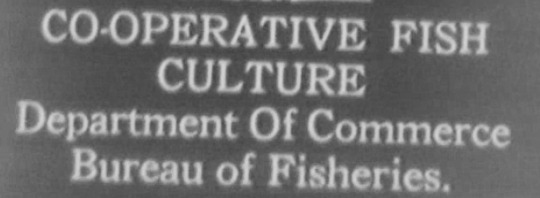
FILM: Cooperative Fish Culture, 1927. Shows work at fish hatcheries operated by the Bureau of Fisheries
More online!
“A Carpapalooza: An American Anthem”, Pieces of History
Learn about the dangers of illegal muskrat trapping!
Fur Warden Sketches Map of Fortymile River Basin in Alaska, The Text Message.
National Park Service Virtual Tour, National Archives Catalog newsletter.
#usfws#fish and wildlife#nature#environment#fishing#deep sea fish#deep sea exploration#deep sea creatures#deep sea life#yosemite#national parks#fishing life#catch and release#carpfishing#angler#wildlife photography#lures#fishing trip#department of the interior#usinterior
46 notes
·
View notes
Text
Volunteers for Conservancy, Art for Warblers
Volunteers for Conservancy, Art for Warblers

For Friday, Jan. 24, 2020
…audio…
1 – The Saginaw Basin Land Conservancy is looking for volunteers.
The Bay City-based nonprofit says there are opportunities to help plant trees, reclaim vacant land, maintain trails and make a difference.
Individuals, organizations and corporate partners are welcome, the conservancy says.
Cleanups and other events are planned for April through September on t…
View On WordPress
0 notes
Photo

Due to the flooding and dam collapses in the local area.... Freeland, Western Saginaw Twp, Thomas Twp, Swan Creek are in the firing line next that they are on along the Tittabawssee downstream. Tittabawssee River joins the Saginaw River at Shiawassee National Wildlife Refuge and Green Point Environmental Learning Center on the southside of Saginaw to head out of the bay as apart of Saginaw bay watershed basin. This is going to be a nightmare like the great 1986 flood. Go to higher ground. Remember to NEVER drive through a flooded roadway. Turn around, don't drown. Be safe, my fellow Michiganders.
3 notes
·
View notes
Text
Lake Erie provides drinking water for more people than any other, but algae blooms are making it toxic
https://sciencespies.com/environment/lake-erie-provides-drinking-water-for-more-people-than-any-other-but-algae-blooms-are-making-it-toxic/
Lake Erie provides drinking water for more people than any other, but algae blooms are making it toxic
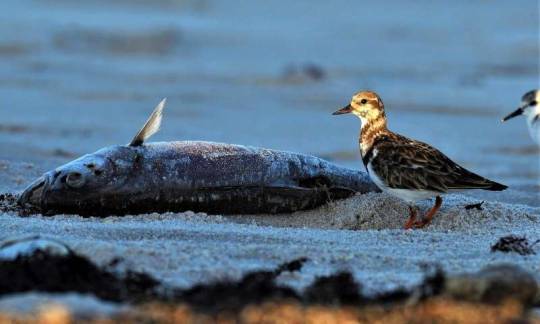

Credit: CC0 Public Domain
Every year, an explosion of microscopic life reigns over western Lake Erie, forming a green slick of algae and bacteria so massive and vibrant that it can be seen from space.
The harmful algae bloom slimes fishing boats, paints beaches in toxins and engulfs water intake cribs. In 2014, it left 400,000 people without drinking water for three days after toxins infiltrated Toledo’s water system. Then-Gov. John Kasich declared a state of emergency and called in the National Guard to distribute bottled water in an incident that served notice that drinking water from Lake Erie was in peril.
This year, the bloom was among the most severe and toxic since scientists began keeping track in the early 2000s. At its peak, it coated around 620 square miles of Lake Erie’s surface waters, an area more than twice the size of Chicago, according to satellite imagery. The sheer weight of blue-green bacteria making up the bloom—forecast to be around 46,000 metric tons—was expected to be a new record.
“If you did a Google image search for “Toledo water,” what would pop up is the Toledo skyline where the Maumee River looks like the Chicago River on (St. Patrick’s Day),” Mayor Wade Kapszukiewicz said. “The only difference is we didn’t put any dye in it.”
Climate change is jeopardizing two of the most precious resources the Midwest possesses: food and water, according to federal studies. Greater rainfall and more powerful storms are eroding some of the richest soils in the United States and, in doing so, washing bloom-inducing fertilizers from farm fields into Lake Erie. More frequent torrential downpours are also overpowering antiquated sewer systems at times, releasing a profusion of raw sewage into waterways, further polluting and degrading water quality.
Meanwhile, warmer temperatures are allowing the microbes within algae blooms—particularly the toxin-producing bacteria—to flourish in greater numbers and for more months of the year, posing elevated and prolonged risks to drinking water, wildlife and the $15.1 billion tourism industry along Ohio’s coastline.
The Great Lakes are all connected and collectively hold 20% of the world’s fresh surface water, but each lake has unique features—depth, shape, size and surroundings—making them vulnerable to different aspects of climate change.
Algae blooms occur annually across the region in shallow, sheltered waters like Saginaw Bay in Lake Huron and Green Bay in Lake Michigan. A large algae bloom even developed once in the normally pristine waters of Lake Superior near the Apostle Islands, a harbinger that no environment is immune.
The danger is most acute in Lake Erie—the shallowest, southernmost and warmest of the Great Lakes—which is a natural incubator for these colonies of microorganisms.
While countries across the globe face drought and water insecurity, it’s a bitter irony that some communities sitting on the edge of the planet’s largest system of freshwater—more than 11 million people depend on Lake Erie for drinking water—are compelled to buy bottled water.
“As population explodes, water is going to be the most valuable resource on planet Earth by the end of this century. It therefore represents the greatest advantage that this part of the country has. This region—the Great Lakes region, the Snow Belt, the Rust Belt, whatever you want to call it—has faced hard times over the last 50-60 years,” Kapszukiewicz said. “But … if we can hold on, we may be the most valuable part of the country. Frankly, with what we have, (the Midwest) could be Saudi Arabia in 100 years. We just can’t squander it.”
Billions of dollars have been spent monitoring Lake Erie’s water quality, overhauling drinking water treatment and reducing sewage outflows. But the biggest contributor to these blooms—agricultural runoff, which is responsible for up to 89% of the phosphorus flowing into Lake Erie—remains largely unregulated.
“The amount of manure from pigs, chickens and cows that goes into the western basin, that seeps untreated directly into Lake Erie, is roughly equivalent to all human waste from the cities of Chicago and Los Angeles combined,” Kapszukiewicz said. “That’s just how much animal manure is going in untreated—I’m not even talking about what they spray on crops. This is why we’re living in the world we’re living in.”
The 1,500 square miles surrounding the Maumee River was once known as the Great Black Swamp, a marshland that fostered a wealth of wildlife and naturally filtered nutrients through plant roots.
When European settlers arrived in northwest Ohio in the early 1800s, they gradually drained the swamp, converting it to farmland and introducing the livestock that would produce a concentrated source of manure. Nearby cities boomed in size, not only pumping their own sewage waste into the rivers, but also adding in phosphate laundry detergents before they were banned nationwide in 1994.
In the ’60s and ’70s, Lake Erie was so rife with nutrient pollution it was declared “dead.” Under the Clean Water Act, implemented in 1972, the U.S. cracked down on municipal wastewater treatment facilities, industrial polluters and other contributors. And, for a while, the algae blooms subsided.
In the past two decades, however, the blooms have returned as large as ever.
Scientists say Lake Erie has endured harmful algae blooms historically, but the modern-day magnitude is believed to be increasing as a result of human activities and climate change.
Each year, as melting winter snowpack and spring rains cascade over the rural landscape of northwestern Ohio, a torrent of water flushes an unfathomable amount of manure and commercial fertilizer from farm fields into the Maumee River, a 137-mile waterway carrying waste from Fort Wayne, Indiana, to Toledo, and eventually flowing into the shallowest end of Erie. Meanwhile, throughout the year, Detroit routinely pumps wastewater and sewage into its namesake river, as do other major metros.
These rivers become fuses as fecal-laden waters plunge into western Lake Erie. Nutrients—particularly phosphorus—trigger an eruption of microscopic algae, according to Chris Winslow, director of the Ohio Sea Grant, a research and education collaborative led by Ohio State University.
Just as humans need vitamins to grow, so does algae. Iron, potassium and nitrogen are essential and available in ample amounts. Human and animal excrement contain the missing ingredient: phosphorus.
“You bump up the phosphorus, and they are just waiting to capitalize off of it,” Winslow said.
An analysis of aerial photographs and state permit data identified 775 hog, cattle, dairy and poultry operations in the Maumee River watershed in Ohio, Indiana and Michigan in 2018—a 42% increase since 2005, according to a report by the Environmental Law and Policy Center and the Environmental Working Group, nonprofit advocacy groups. Of the large-scale “factory farms” in the watershed, more than a quarter had expanded since being built. Although the Maumee only contributes 5% of the water entering Lake Erie, it is so loaded with phosphorus that it is the main driver of the algae blooms.
The most potent form of phosphorus, unblended with soils, acts as a catalyst for blooms each year. The amount of this full-strength phosphorus has increased 140% since 1990. Some experts suspect this can be attributed to a change in farming practices, namely no-till farming—a technique intended to curb soil erosion, but one in which layers of manure piled on top of farmland are more easily carried away by heavy rains.
Winslow said other factors are also at play.
“We have zebra mussels in our lake filtering the water differently than 40 years ago,” he said. “We have larger farm operations. We have increased rainfall and runoff to take nutrients from the land into the water. We have warmer temperatures, and these organisms like warmer temperatures. Some of these things have more of an impact than others, but there’s a lot of moving parts.”
This fall, the Ohio countryside was a desolate mud pit marked by rampant weeds, standing water and stunted crops.
Over 880,000 acres intended for corn and nearly 600,000 acres for soybeans were left barren this year, as farmers opted to take insurance money rather than risk a meager harvest.
Ty Higgins, spokesman for the Ohio Farm Bureau, described rural Ohio this fall as the “end of the world.”
Farmers, he said, can use drought-resistant corn. They can plant strains that perform better in heat. But there’s no silver bullet for rain.
“That’s one curveball Mother Nature can throw farmers that they don’t have a workaround,” Higgins said.
Climatologists say the region has become soggier.
A spike in greenhouse gases, largely from man-made carbon emissions, has driven global temperatures upward, according to the National Oceanic and Atmospheric Administration. For every degree of warming, the atmosphere can hold 4% more moisture, which can translate into heavier and more severe downpours.
Since 1951, the Great Lakes region has seen a 2.3 degree rise in temperatures, a 14% uptick in annual precipitation and a 35% increase in the most intense storms. In the past year, the rain, snow and flooding across the Midwest was one for the record books.
Between September 2018 and August 2019, the Buckeye State endured the wettest 12 months on record since NOAA began keeping precipitation statistics in 1895.
Chris Weaver, 45, of Lyons, was one of the few who decided to plant this year—not that he had much of a choice. His family-owned dairy peddles three commodities: milk, meat and manure. With 3,000 cows on one farm in Williams County, his employees work around the clock corralling cattle into milking stalls. He depends on 5,000 acres of cropland for feed.
And each fall, Weaver draws from a manure pond the size of a football field to fertilize his land.
Manure, some might argue, is the greatest commodity for farmers with livestock. Not only does it benefit crop growth, the excess can be sold. Weaver charges about $400 to cover an acre.
“Grandpa always told me, “It smells like money to me,”” said Higgins, the farm bureau spokesman.
In the fall of 2018, because of the onslaught of rain, most farmers didn’t get a chance to put fertilizer down. Those who did witnessed that money carried downstream in this year’s spring rains.
It wasn’t until July 1, about two months later than normal, that Weaver was able to get most of his corn, soybean and alfalfa crops in the ground. Weaver had some reserves to feed his cattle but not enough to make it a whole year without a harvest.
He was still anxiously monitoring the weather throughout the fall, praying there wouldn’t be an early frost. He managed to reap his corn by mid-October while his soybeans withstood several inches of snow in November. The harvest, he said, would be enough to make it without buying reserves.
“It has to be a one-off,” Weaver said, almost as if trying to convince himself. “We’ve had a lot of wetter years. But if it happens again next year, I’m going to really be scratching my head about what I’m doing.
“It’s hard to imagine,” he said, with his voice trailing off. If July 1 became the start of planting season, “I don’t think we’d ever have corn here ever again.”
In addition to sweeping manure and commercial fertilizer into waterways, the rain turns soil into claylike mud that prevents oxygen from reaching crop roots, killing the plants. Soggy soil also makes the land harder to tend, because large farms require heavy machinery, including tractors, prone to getting stuck in the muck.
Some farmers plant cover crops, such as peas and oats, in the fall to help absorb moisture from saturated soils and hold the nutrients from fertilizer in place. The problem is, these crops don’t offer much of a return on investment. And, at the end of the day, farming is a business.
Weaver, however, sees other benefits beyond the monetary value. His in-laws live in the Toledo area and go camping each year near the lakeshore. It’s also where he goes walleye fishing.
“Overall it’s something where maybe I’m breaking even, but I’m doing something to help the environment,” Weaver said. “I think every farmer is recognizing that (cities like Toledo) are affected, that they have to do better.
“We’re only an hour from Lake Erie, so it’s our backyard too.”
But Weaver is in the minority. According to the U.S. Department of Agriculture, cover crops were used on less than 10% of cropland in Ohio in 2017.
Downstream, the Toledo area braces each year for verdant, bacteria-choked waters, no-swim advisories at beaches and noxious odors from scummy bays.
The morning of Saturday, Aug. 2, 2014, Crystal Jankowski, nearly nine months pregnant, awoke before dawn and noticed a number of missed calls from family members. Jankowski, whose father was ailing from liver and kidney failure, feared grim news about his condition.
Instead, Jankowski was jolted by ominous instructions from her mother: “Tell Josh to go find water—now! There’s something wrong with the water.”
More than 400,000 people and hundreds of businesses adjacent to the world’s 13th largest lake suddenly found themselves without potable water.
The culprit was Microcystis aeruginosa, a blue-green cyanobacteria known to create a toxin more lethal than cyanide or antifreeze. Its poison, which can cause liver failure, was so efficient at killing animals that scientists originally termed it “fast death factor.” In one of the most deadly episodes, more than 50 people died in Brazil in 1996 when hospital patients were exposed to unfiltered water containing the toxin. Scientists say no deaths attributed to these toxins have been reported in the U.S.
In Toledo, the bloom had drifted from Maumee Bay and engulfed the city’s water intake 3 miles offshore and then stalled, leaving the neon green bloom to linger for days.
At the treatment plant, a lab test showed an alarming result: The drinking water had been compromised.
Following the historic shutdown, Ohioans went on a maddening search for water, many crossing state lines.
Josh Jankowski moved through the crush of people rummaging barren grocery store aisles. Nearly three hours later, he returned with a package of baby wipes and a bottle of Pedialyte.
Not long after that, Crystal Jankowski began having contractions. The couple rushed to the hospital, where the emergency room was abnormally busy for a Saturday morning.
“Everyone thought they were sick. They had woken up, drank their coffee, took a shower. And then the morning news told people not to drink the water, and, if you did, here are the symptoms,” she said.
Nurses told Crystal Jankowski to go home. She wasn’t ready to give birth, but even if she had been, the hospital was not accepting some patients for surgery because it didn’t have access to sterile water.
“It was just scary. Nothing prepared you for this,” she said.
The National Guard arrived to distribute one case of water per family, but fights broke out in the parking lot. Social media was filled with people describing futile searches for water.
“It brought out the best and worst of human nature at the same time,” Kapszukiewicz, the mayor, said. “There was a lot of generosity: neighbors helping neighbors, a sort of charitable spirit, a lot of volunteerism. But it also produced a sort of ghoulish (behavior). Convenience stores were quickly out of water all of a sudden. The price of bottled water spiked unnaturally at other stores. It was a traumatic event for the community, and five years later we’re still dealing with the aftershocks of it.”
With her contractions still far apart, Crystal Jankowski and her husband drove 40 miles to a friend’s house and filled coolers, jugs and other containers with water.
They delivered them to friends and family members, then Josh Jankowski boiled some water and drew his wife a lukewarm bath. Both went to sleep hoping the crisis would be resolved before their daughter was due.
The next afternoon, moments before Crystal Jankowski returned to the hospital, Toledo officials announced the drinking water was safe.
But even after 12 hours of labor and complications from bleeding, the water was still foremost in Crystal Jankowski’s mind.
“I was a big bubble of paranoia,” Crystal Jankowski, 31, said. “All these things were going through my head. Did the doctor wash his hands with old water? Are they covered in toxins now? I wasn’t intending to breastfeed, but I did. Because you need to mix the formula with water, and I didn’t know where they were getting their water.
“As a mom, it makes me want to cry,” Jankowski said, her voice quavering with emotion. “Every mother should enjoy the first time they hold their child. They shouldn’t be stressing about whether there are toxins in the water.”
Lake Erie’s noteworthy green tinge is the result of a medley of algae and bacteria. Phytoplankton, a microscopic green algae, is food for small organisms. Cyanobacteria, sometimes called blue-green algae, is actually an aquatic bacteria that captures sunlight for energy and produces oxygen like regular algae, but some also produce toxins that are harmful to humans and animals.
Microcystis aeruginosa is the most prevalent cyanobacteria found in Lake Erie. But it is just one of roughly a dozen that have collectively staked a larger claim since the introduction of invasive zebra and quagga mussels in the 1980s.
The fingernail-size shellfish filter copious amounts of water, ravenously eating the beneficial green algae and plankton that feed fish. The mussels don’t consume the cyanobacteria, which, in turn, allows it to increasingly dominate the bloom.
While every type of cyanobacteria doesn’t create toxins, it’s clear that Lake Erie’s annual bloom is becoming progressively more toxic. Since 2014, federal, state and local agencies have conducted routine water sampling for toxins, with 2019 being among the years when it was most severe.
Scientists are continuing to find new harmful substances produced by cyanobacteria, though they don’t fully understand why these bacteria secrete them.
Researchers have theories. Some believe the cyanobacteria are producing toxins to kill a perceived competitor. Others believe that the bacteria cells produce toxins as nourishment when they are stressed. There is also evidence that links toxin production to the levels of nitrogen (an abundant nutrient also found in excrement) in the water.
No matter the reason, residents of Toledo remain on high alert.
Since the crisis, the Jankowskis store more than a dozen jugs of water in the basement. They’ve had a $3,000 water filtration system installed for their shower and sinks. And they don’t drink from the tap.
Mayor Kapszukiewicz is trying to erase these kinds of fears. Elected three years after the water crisis, he tries to drink tap water in public whenever possible. He kept the pressure on suburban communities that threatened to bolt the Toledo water system, which would have been a significant financial loss for the city. And his administration created an online dashboard showing the safety of drinking water that he intends to retire because it has never dropped below the “Safe” threshold.
There are no federal regulations on the amount of cyanobacteria toxins that can be in drinking water. But, in the aftermath of August 2014, the Collins Park water treatment plant quadrupled its capacity for carbon activated powder and chlorine, chemicals used to remove these toxins.
Toledo also accelerated the construction timeline for a new form of water treatment using ozone, a technique that is much more efficient at destroying cyanobacteria toxins. Since the 2014 crisis, the city has also vowed to find an alternative water source.
Before 2014, it could take as long as 12 hours to get test results on water quality. Now, a network of buoys is the first line of defense and produces results almost immediately.
The buoys are equipped with underwater cameras that measure cloudiness and pigment, which signals the severity of the bloom and toxins, according to Ed Verhamme, a coastal engineer for LimnoTech, an environmental consulting firm.
“An entire day can go by and you only have an opportunity to look at two samples,” Verhamme said, referring to the former testing method. “That’s why buoys are so important because every 10 minutes they give you a proxy for intensity of the bloom.”
Applying chlorine, a chemical commonly used in water treatment, to water with large amounts of organic matter like algae can result in disinfection byproducts. The long-term health implications from consuming these substances are unclear. Research has linked some to an increased risk of certain cancers and miscarriage.
The new treatment is scheduled to go online August 2020 and should curb the amount of these incidental byproducts.
The adjustments that have been made and overhauls to come are unlikely to change things for Markie Miller, an activist for Toledoans for Safe Water, who has lived near Lake Erie her entire life. In the five years since the water ban, Miller, 30, said every summer is marked by caution and paranoia.
At the height of harmful algae blooms, many people will only drink bottled water. Drinking Toledo tap water has been compared to swallowing swimming pool water because of the pungent taste of residual chlorine. At local restaurants, complimentary glasses of water go untouched. Many of Miller’s friends don’t order coffee or other beverages that might require tap water as the base. And when using her Brita water filter, Miller sometimes will pour out an entire pitcher because she thinks the purified water still has a strange taste.
Even after amassing an encyclopedic knowledge of local water issues, Miller sometimes finds it hard to distinguish between a justifiable concern and a manifestation of her fears.
“The people at the water treatment plant are always ready to tell you that they are ready with an arsenal of chemicals, that we’re prepared for another 2014. But I’m like, is this just as bad as ingesting toxins? Is it worse? I don’t know. It does make you nervous,” Miller said. “I’ve done dishes to the point where my hands turn red, and I stop and think, “Is this all in my head? Am I freaking myself out because I know too much about this?” After a while, it gets to you.”
But this mindset is ingrained in local culture. At the height of summer, when most coastal communities flock to the beach, the beaches in western Lake Erie are deserted.
Many coastal areas are marked by signs with ominous advice: “Avoid swallowing lake water.” In some instances, the state Department of Health ordered people not to even touch the water, given certain levels of toxins can cause rashes and burns.
“I know growing up here in this area every year, we would go up north to enjoy the beach in Lake Huron. It wasn’t until I reached adulthood that I realized how close we lived to Lake Erie or that it was our source of drinking water,” Miller said.
“When people say they’re going to the beach, your first response is “Well, where are you going?””
The algae blooms have even become popularized in a green beer, “Alegae Bloom,” served in a can with comic book-like art depicting a green swamp creature emerging from the water.
This year, on the fifth anniversary of the water crisis, Miller and other activists went to Maumee Bay State Park. The weather was beautiful. It was sunny and bright. But the water was a radiant green, and there was nobody at the beach.
Other communities should take heed of what is occurring in Lake Erie, environmentalists say. These same cyanobacteria capable of creating toxins are found in ponds, rivers, lakes and oceans across the world—and with climate change, conditions are more conducive to their growth.
“In general, many of us have the view that these organisms can be world travelers,” said Greg Dick, a researcher at the University of Michigan who studies cyanobacteria. “They can travel across continents. There is some evidence they can be aerosolized in little droplets and clouds. They can get up in the jet stream.
“We have this saying when it comes to microbes: Everything is everywhere, and then the environment selects.”
The southern end of Lake Michigan is an unlikely home for sizable blooms, due in part to the reversing of the Chicago River, a historic feat that sends much of Chicago’s waste into the Mississippi River basin, contributing to the bloom in the Gulf of Mexico instead of Lake Michigan.
Treating for toxins is a palliative approach, according to environmental advocates.
The broader issue with algae and bacteria blooms traces to phosphorus pollution. Since 2011, former Gov. Kasich spent more than $3 billion on Erie’s algae blooms, most of which went toward curbing sewage overflows from wastewater treatment plants and upgrading drinking water facilities.
However, in any given year, urban and suburban wastewater only contributes about 9% of the phosphorus flowing into western Lake Erie, at most. These wastewater treatment plants are regulated by the Clean Water Act, and Detroit’s—the watershed’s largest—has curtailed its phosphorus pollution by more than 51% since 2008.
Agricultural runoff, on the other hand, is responsible for as much as 89% and is not regulated under the Clean Water Act. In 2015, the Great Lakes Water Quality Agreement, a binational pact between the U.S. and Canada, established a goal of slashing phosphorus pollution into western Erie by 20% by 2020, a mark that experts say will surely be missed.
Ohio’s Republican-controlled state legislature has prohibited farmers from spreading manure under certain conditions, such as ahead of a rain forecast or when soil is too saturated. Farmers who want to fertilize more than 50 acres are also required to be certified on best practices. But the majority of legislative and executive proposals have been voluntary.
Higgins, the farm bureau spokesman, said it would be rash to implement stricter regulations for farmers.
“Every farmer is different,” he said. “Whether it’s their soil type, their topography, their equipment—it’s not a one-size-fits-all solution. That would be easy if we just said, “Every farmer do this.” There’s 50 different ways to skin this problem.”
Last year, most farmers didn’t fertilize, because of the rainy weather. But this spring’s phosphorus pollution was the second highest since a team of government and university researchers began forecasting the bloom in 2002. Farmers say this absolves them and illustrates there are other sources that need to be investigated.
However, scientists who study the blooms say this is only confirmation that farm fields have been so overfertilized that residual fertilizer from previous years is continuing to contribute to the problem.
Considering the amount of phosphorus entering Lake Erie has held steady, Kapszukiewicz says, state efforts simply haven’t been enough. And those most affected by the fallout continue to be frustrated because the issue is out of their control.
“The state of Ohio has been pretty good at providing carrots,” Kapszukiewicz said. “It has been horrible at offering sticks. Carrots are good. Kasich spent $3 billion worth of carrots. The legislature gave us another $172 million worth of carrots this year. But all the carrots in the world aren’t going to fix this problem without a stick.”
A band of Toledoans petitioned to put a referendum on the February ballot that would create a Lake Erie Bill of Rights, a designation to grant the lake the same rights as a person. It would also allow environmentalists to sue on behalf of the lake.
It passed with 61% of voter support. Then, just as quickly as it was adopted, it was nixed by the legislature, which prohibited legal actions on “behalf of nature or an ecosystem.”
In a flurry of recent litigation in federal court, local communities and environmental groups are seeking a cap on the daily amount of nutrient pollution that can enter western Lake Erie. Under the Clean Water Act, any body of water deemed impaired needs to have a federally enforceable plan to remedy its degraded status.
The Ohio EPA had already deemed western Lake Erie impaired but designated it a low priority, which brought on another lawsuit calling for the federal government to force the state to take action.
But locals like Markie Miller already knew that Lake Erie is impaired. For them, the designation was simply semantics; they want progress.
“It’s like, if this has been a problem for so long, why haven’t we taken action before?” Miller said. “Why wasn’t it until it hit our kitchen sinks that we started going, ‘Maybe we need to solve this problem?'”
Explore further
Expect another huge blob of algae on Lake Erie this summer
©2019 Chicago Tribune Distributed by Tribune Content Agency, LLC.
Citation: Lake Erie provides drinking water for more people than any other, but algae blooms are making it toxic (2019, November 20) retrieved 20 November 2019 from https://phys.org/news/2019-11-lake-erie-people-algae-blooms.html
This document is subject to copyright. Apart from any fair dealing for the purpose of private study or research, no part may be reproduced without the written permission. The content is provided for information purposes only.
#Environment
0 notes
Photo

Herbert C. Jackson approaching the Sixth street turning basin as she departs from Saginaw, MI at sunset.
2 notes
·
View notes
Link
Products with this design are available from Redbubble
#redbubble#findyourthing#platform#outlook#nature#pier#discovery preserve#euclid linear park#bay city#michigan#saginaw basin#land conservancy#lease sblc providers#wetland
0 notes
Link
Products with this design are available from Redbubble
#redbubble#findyourthing#birdhouse#wetland#discovery preserve#bay city#michigan#saginaw basin#land conservancy#autumn#brown#sblc
0 notes
Text
Beach Slobs, Urban Gardens and Solar Legislation
Beach Slobs, Urban Gardens and Solar Legislation
For Friday, Nov. 22, 2019
…audio…
1 – Great Lakes beaches may be too cold for swimming. But results from this year’s Adopt-a-Beach program show plenty of people used the lakes this year, and left trash behind.
The Alliance for the Great Lakes, which organizes the Adopt-a-Beach program, has released results of 2019 cleanups.

Photo by Daria Shevtsova on Pexels.com
They include:
Ninety percent…
View On WordPress
0 notes
Text
Talkin' Trash at SVSU, Droppin' Rocks in Saginaw Bay
Talkin’ Trash at SVSU, Droppin’ Rocks in Saginaw Bay

For Friday, Aug. 23, 2019
…audio…
1 – Folks will be talking trash on Wednesday, Aug. 28, at Saginaw Valley State University.
The event is being put on by the Saginaw Basin Land Conservancy.
The conservancy will be discussing a regional plan for litter-free land.
They’re looking for insights and feedback on methods to prevent blight.
The regional interactive workshop also will focus on taking…
View On WordPress
0 notes
Text
Saginaw Bay Bird Counting and Beach Testing, Cedar River Cleanup
Saginaw Bay Bird Counting and Beach Testing, Cedar River Cleanup

For Friday, May 15, 2020
…audio…
1 – Every bird counts.
The Saginaw Basin Land Conservancy is holding a 24-hour birding derby on June 4.
Conservancy staff will trek out to find and record as many species of bird as possible in the watershed.
The record stands at a little more than 150 species.
The Every Bird Countsevent is a fundraiser for the conservancy, where supporters pledge money per…
View On WordPress
0 notes
Text
More Michigan Renewables, Updated Fish Finder, Saginaw Pollinator Project
More Michigan Renewables, Updated Fish Finder, Saginaw Pollinator Project
For Friday, May 25, 2017
…
1- Michigan’s two largest utilities have announced plans to increase their commitments to renewable energy.
They say it’s based on a continued transition away from coal and in response to customer demand.
According to Midwest Energy News, DTE Energy says it will add 6,000 megawatts of renewable energy from wind and solar, and retire all of its coal power plants by…
View On WordPress
0 notes
Text
Two Firsts: A Bay City Nature Preserve, and the High-Voltage Thumb Loop
1 – The Saginaw Basin Land Conservancy is establishing its first urban nature preserve in Bay City.
Via SBLC.
The preserve will be at the Bay County-owned Euclid Linear Parkon Euclid Avenue, which is located in a commercial and residential area of the…
View Post
0 notes